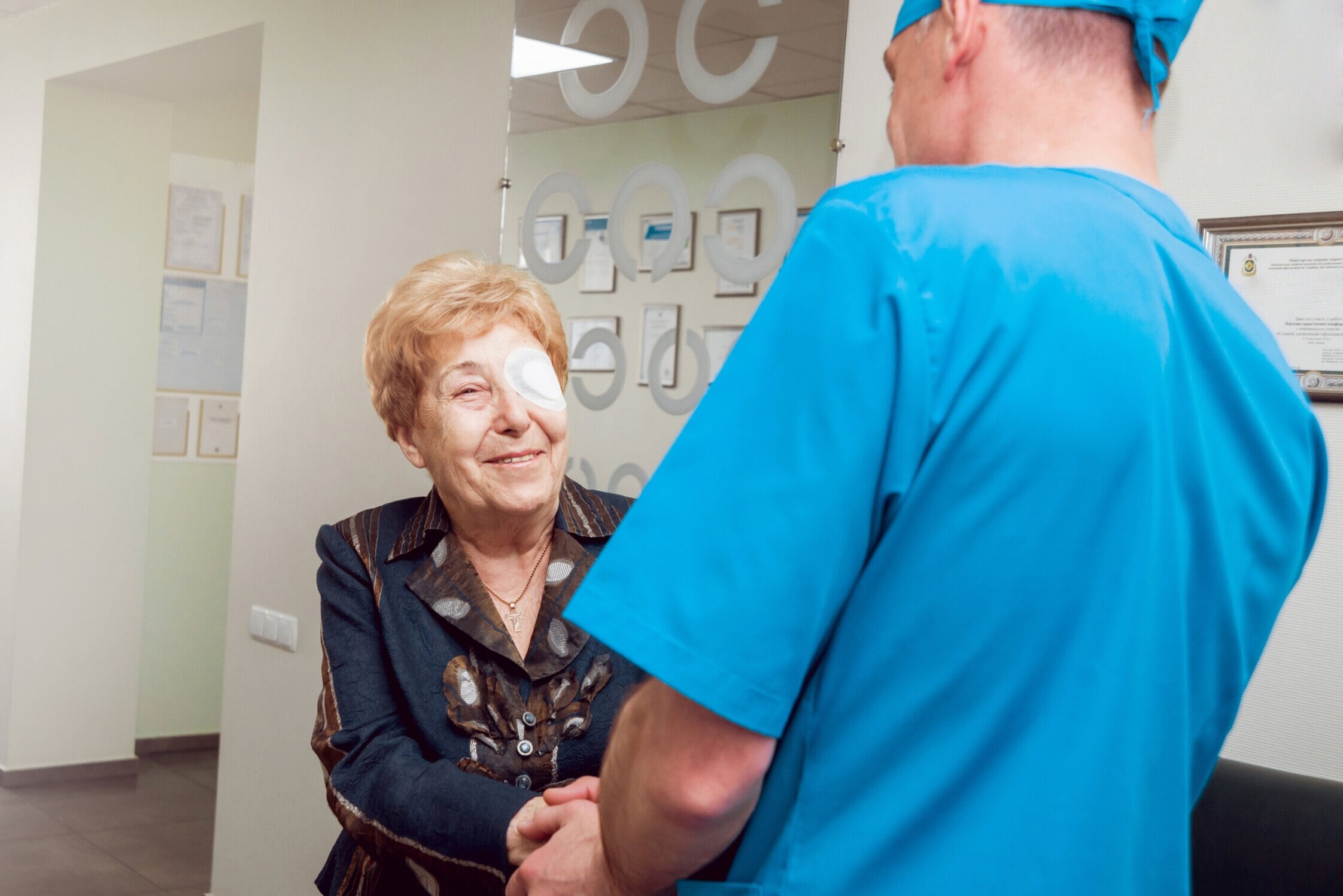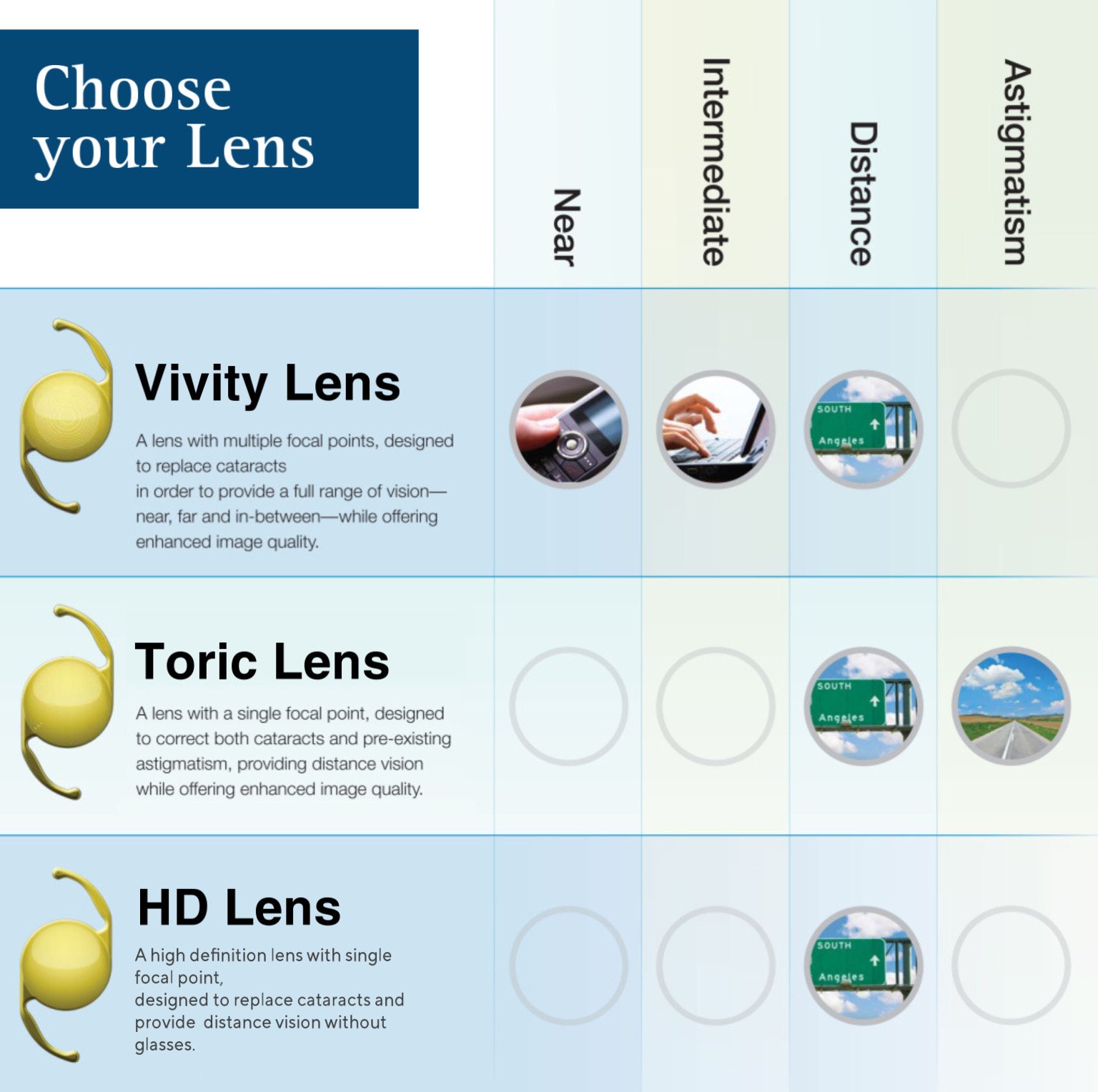Choosing the Intraocular Lens
Are you considering cataract surgery? Your Flex Spending Card can help. During consultation, you will be asked to choose the Intraocular Lens (IOL) which best fits your lifestyle. Just like there are different models of cars and refrigerators, there are different models and functions of Intraocular lenses (IOL).
3 Steps of Cataract Surgery
1. Choosing the IOL
There are different models and functions of Intraocular lenses (IOL). Choose the IOL thar best fits your lifestyle.
2. Surgery
Your surgeon will make tiny cuts with a laser or a blade near the edge of your cornea, which is the clear covering on the front of your eye. This will enable your surgeon to reach your lens with the cataract and remove it. Next, your surgeon will put a new lens of your choice in place.
3. Healing
In most cases, you will not need stitches to close the incisions. The so-called self-sealing incisions will close on their own in time. Your surgeon will place a shield over your eye to protect it during the healing process.
Check which Lens option best fits your lifestyle
With today’s technology, you can better control the outcome of your cataract surgery and how you would like to see things (literally). The following lens options can help you better understand what type of lens is the best for you and why:
✔️The high-definition or HD lens gives you the ability to see distance without glasses. The HD lens also provides a slight improvement in intermediate vision. With an HD lens you will not need glasses for distance, you will only need glasses for near.
✔️If you have astigmatism, there is a specific HD lens for you. It’s called Toric lens and it’s specifically designed to correct distance vision for patients with astigmatism. With a Toric lens you will not need glasses for distance, you will only need glasses for near. This is the best option for patients with astigmatism as basic monofocal lens and standard HD lens do not correct astigmatism.
✔️If you would like to have better functionality and you want to be glasses-free for distance, computer, and near, consider the Vivity® lens. The Vivity® lens is a high-technology lens available for patients having cataract surgery and is considered an Extended Depth of Focus (EDOF) lens. It is designed to give your eye a better range of focus compared to a basic monofocal lens so you can see more things without glasses. You will not need glasses for intermediate vision. You will find it easier to see things when you are shopping in the store, reading on the computer screen, and seeing your car dashboard. The technology in the Vivity® lens supports your vision in low light so you will experience fewer negative side effects such as glare and halos around lights at night. With Vivity® lens you will not need glasses for distance, computer, and near. You may still need glasses for very small print. Using non-diffractive technology called the X-Wave, the Vivity® IOL provides a continuous range from distance to functional near vision after cataract surgery.
Are HD lens, Toric lens, and Vivity lens covered by your insurance?
No. All these IOLs, including HD lens, Toric lens (astigmatism-correcting), and Vivity lens are advanced technology lenses. There is an extra cost for them. Medicare and commercial insurance do not cover advanced technology IOL for cataract surgery. Premium upgrades to advanced technology lenses must be paid for out-of-pocket by the patient. However, there are other ways to pay for upgrades for cataract surgery. The most common way is your Flexible Spending Card.
How can you cover some of the costs for your IOL?
Flexible Spending Card
You can use Flexible Spending Card provided to you by your insurance towards upgrades on your cataract surgery. For the best outcome with premium lenses, your Flex Spending Card could be the answer to stay in budget. Use your FSA today towards upgrades on your cataract IOL. Ask your insurance provider about details or give us a call 727-372-1311.






















